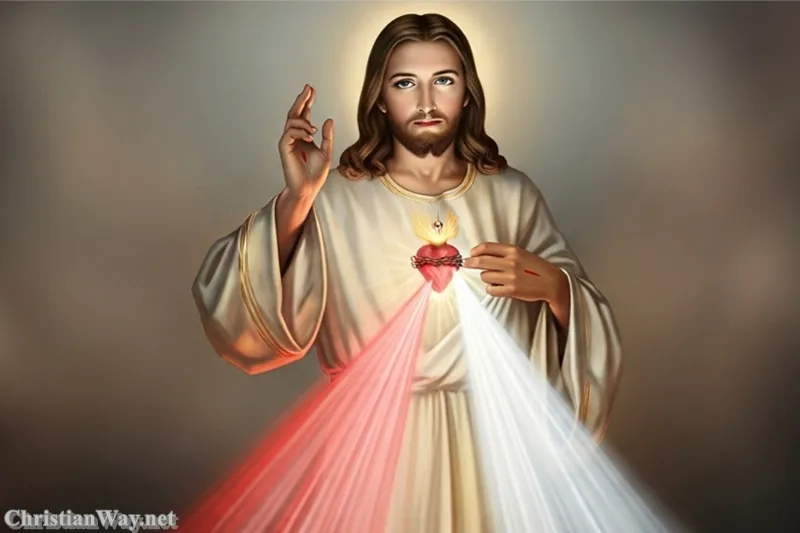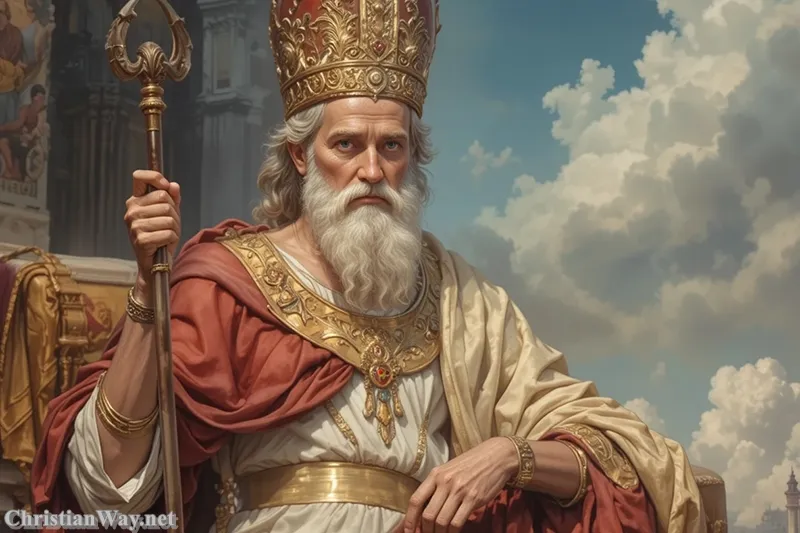Dear friends in Christ,
Every human heart, whether it knows it or not, thirsts for mercy. Beneath our successes and failures, our faith and our doubts, lies a deep longing to be seen, known, and forgiven. This longing is not a weakness — it is the echo of our creation in the image of God, who is love and mercy itself.
When we speak of the Divine Mercy of Jesus, we speak of the very heart of the Gospel. It is not merely an attribute of God among others; it is the radiant core of His being revealed through Christ. The mercy of Jesus is the face of divine love meeting human misery — not with condemnation, but with compassion.

In every age, Christians have looked upon the Cross and the image of the Risen Lord and discovered that mercy is not abstract. It has a face, a name, and a heart that beats for us. It is Jesus Christ Himself — the living fountain from which flows forgiveness, healing, and peace.
Let us journey together through the mystery of this Divine Mercy, as it has been revealed through Scripture, through the Church, and through the tender devotion that has comforted millions of souls across the world.
The Heart of Mercy Revealed in Christ
“God, rich in mercy” (Ephesians 2:4–5)
From the beginning, the Bible unveils a God whose justice is inseparable from mercy. Even in Eden, when Adam and Eve fell, God clothed them and promised a Redeemer. When Israel turned away, He sent prophets not to destroy but to call them back.
But the fullness of mercy came when “the Word became flesh and dwelt among us” (John 1:14). In Jesus Christ, mercy took on human form. Every miracle, every parable, every tear shed for the lost reveals the same truth: God’s mercy is not an idea — it is love in action.
When Jesus encountered sinners, He did not recoil in disgust but drew near with tenderness. To the woman caught in adultery, He said, “Neither do I condemn you; go, and sin no more” (John 8:11). To Zacchaeus, the dishonest tax collector, He offered friendship that transformed a heart. And from the Cross itself, He prayed, “Father, forgive them, for they know not what they do” (Luke 23:34).
The Pierced Heart — Source of Mercy
The Gospel of John tells us that after Jesus died, “one of the soldiers pierced His side with a spear, and at once there came out blood and water” (John 19:34). The saints have always seen in this moment a symbol of divine mercy pouring out upon the world. The water signifies baptism, the washing away of sin; the blood represents the Eucharist, the life of Christ given to us.
From His pierced Heart, the Church was born — a community sustained by mercy. Every sacrament is an encounter with that same mercy flowing from the Cross: in baptism, reconciliation, the Eucharist, and even in the anointing of the sick.
The Message of Divine Mercy in Modern Times
Saint Faustina and the Vision of Jesus
In the 20th century, at a time of immense suffering and moral confusion, Jesus revealed anew the depths of His mercy through Saint Faustina Kowalska, a humble Polish nun. Between 1931 and 1938, she recorded in her diary the words and visions she received from the Lord.
Jesus said to her:
“The greater the sinner, the greater the right he has to My mercy.”
He showed her an image of Himself, clothed in white, with rays of red and pale light streaming from His Heart — symbolizing the blood and water that flowed from His side. Beneath this image were the words: “Jesus, I trust in You.”
This devotion — known as the Divine Mercy devotion — has spread throughout the world, calling hearts to trust in God’s boundless compassion. The Feast of Divine Mercy, established by Saint John Paul II in 2000, is celebrated on the Sunday after Easter — a day the Lord Himself called “the Feast of Mercy.”
The Three Pillars of Divine Mercy
- Trust in Jesus: Every grace flows through trust. The more we abandon ourselves to Him, the more His mercy can transform us.
- Receive Mercy: Through the sacraments, especially confession and the Eucharist, we allow His mercy to cleanse and renew us.
- Show Mercy: Mercy received must become mercy shared — through forgiveness, charity, and compassion toward others.
The Divine Mercy Image — A Window into the Heart of Christ
The image of the Divine Mercy is not merely devotional art; it is a theological revelation. The white garment recalls the Resurrection, the light of new life. The red ray represents His Blood — the price of our salvation; the pale ray symbolizes the water that purifies our souls.
Christ’s right hand is raised in blessing, while His left points to His Heart — the source of mercy. His gaze is gentle, yet penetrating, as if inviting us to draw near without fear.
When we pray before this image, we are not looking at a distant God. We are meeting the risen Christ who still bears the marks of love. Every time we whisper, “Jesus, I trust in You,” we echo the faith of the saints and the longing of every heart that seeks peace.
The Feast of Divine Mercy — The Eighth Day of Easter
“On that day the very depths of My tender mercy are open.” — Jesus to Saint Faustina
Divine Mercy Sunday is not a separate devotion but the culmination of the Paschal mystery. It completes the octave of Easter, reminding us that the Resurrection is not only victory over death but also the triumph of mercy over sin.
On this day, the Church invites the faithful to receive the sacraments of Confession and Holy Communion in a spirit of trust and repentance. The promise attached to this feast — the complete remission of sins and punishment — is not magic but grace flowing from a heart completely surrendered to God’s mercy.
It is as though Christ says to each soul: “Come as you are. My mercy is greater than your weakness.”
Mercy in Scripture — The Pulse of God’s Word
The Parables of Mercy
The Gospel of Luke, often called “the Gospel of Mercy,” offers stories that reveal God’s tenderness. The Parable of the Prodigal Son (Luke 15:11–32) shows a father who runs to embrace his wayward child — an image of the Father’s heart rushing toward every repentant sinner.
The Good Samaritan (Luke 10:25–37) reminds us that mercy is not sentiment but action — stopping to bind the wounds of another.
And the Lost Sheep (Luke 15:4–7) reveals that heaven rejoices more over one sinner who returns than over ninety-nine who need no repentance.
Each parable is a mirror of Christ Himself, who came “to seek and to save the lost” (Luke 19:10).
The Power of Mercy in the Sacraments
The Sacrament of Reconciliation
Every time we kneel in confession, we step into the stream of divine mercy that flowed from Calvary. Christ’s words to His apostles still echo today: “Whose sins you forgive are forgiven them” (John 20:23).
Confession is not humiliation but liberation. It is the place where shame meets grace, where the sinner becomes beloved again.
The Eucharist — Mercy Made Flesh
In the Eucharist, mercy is not just remembered; it is received. The same Jesus who appeared to Saint Faustina offers Himself to us daily under the humble forms of bread and wine. To approach the altar is to come to the fountain of mercy, to receive the very Heart of Christ.
Living Mercy in Daily Life
Mercy in Thought, Word, and Deed
Jesus told Saint Faustina:
“Be merciful even as I am merciful. Love everyone out of love for Me.”
To live mercy is to reflect God’s tenderness in our families, our workplaces, and our world. It means forgiving those who hurt us, speaking gently when others condemn, and seeing every person — especially the suffering and forgotten — as a child of God.
Mercy does not ignore truth; it transforms it with love. To be merciful is not weakness but strength born of grace.
The Chaplet of Divine Mercy
One of the greatest gifts of this devotion is the Chaplet of Divine Mercy, a prayer revealed by Jesus to Saint Faustina. It is prayed on ordinary rosary beads, with the central invocation:
“For the sake of His sorrowful Passion, have mercy on us and on the whole world.”
This simple, rhythmic prayer carries profound power. It unites our hearts with the Passion of Christ and intercedes for the salvation of souls. Many pray it at 3:00 PM — the Hour of Mercy — when Jesus died on the Cross.
The Universal Call to Trust
At the heart of the Divine Mercy message is trust — not mere belief, but radical surrender. Trust means letting go of fear, guilt, and self-reliance, and allowing the love of Christ to lead us.
Saint John Paul II, who canonized Saint Faustina and instituted Divine Mercy Sunday, once said:
“Apart from the mercy of God, there is no other source of hope for mankind.”
In a world marked by conflict, anxiety, and despair, this message is not optional — it is essential. The Divine Mercy of Jesus is the medicine for our age, the antidote to sin and despair.
Reflect and Pray
Dear brothers and sisters,
The Divine Mercy of Jesus is not a devotion for the pious few — it is the lifeline for every soul. Whether you feel close to God or far away, His mercy is reaching out to you now.
Come to Him as you are. Let His gaze heal your wounds. Let His words quiet your heart: “Do not be afraid. I am with you.”
And when you pray, whisper again the words that summarize the whole Gospel in one act of faith:
“Jesus, I trust in You.”
May the mercy that flows from His Heart renew the Church, heal the nations, and fill your soul with peace.
“Blessed are the merciful, for they shall obtain mercy.” — Matthew 5:7
May the peace of the Merciful Jesus be with you always.
— Fr. John Matthew, for Christian Way





